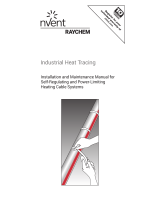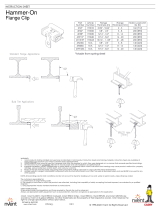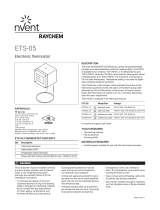
nVent.com/RAYCHEM | 4
Limited Warranty
This nVent Thermal Management product is warranted against defects in material and
workmanship for a period of 18 months from the date of installation or 24 months from the
date of purchase, whichever occurs first. During the warranty period, nVent Thermal
Management will, at its option, either repair or replace products that prove to be
defective. For warranty service or repair, this product must be returned to a service facility
designated by nVent Thermal Management. The Buyer shall prepay shipping charges to
nVent Thermal Management and nVent Thermal Management shall pay shipping charges
to return the product to the Buyer. However, the Buyer shall pay all shipping charges,
duties, and taxes for products returned to nVent Thermal Management from another
country. nVent Thermal Management warrants that the software and firmware designated
by nVent Thermal Management for use with the 460 controller will execute its
programming instructions properly. nVent Thermal Management does not warrant that
the operation of the hardware, or software, or firmware will be uninterrupted or error-free.
Warranty Exclusion/Disclaimer
The foregoing warranty shall not apply to defects resulting from improper or inadequate
maintenance by the Buyer, Buyer-supplied software or interfacing, unauthorized
modification or misuse, operation outside of the specifications for the product, or improper
installation. No other warranty is expressed or implied. nVent Thermal Management
disclaims the implied warranties of merchantability and fitness for a particular purpose.
Exclusive Remedies
The remedies provided herein are the buyer’s sole and exclusive remedies. nVent
Thermal Management shall not be liable for any direct, indirect, special, incidental, or
consequential damages, whether based on contract, tort, or any other legal theory.
Conducted and Radiated Emissions: FCC Statement of Compliance
This equipment has been tested and found to comply with the limits for a Class B digital
device, pursuant to part 15 of the FCC Rules. These limits are designed to provide
reasonable protection against harmful interference in a commercial/ residential
installation. This equipment generates, uses and can radiate radio frequency energy and,
if not installed and used in accordance with the instructions, may cause harmful
interference to radio communications. However, there is no guarantee that interference
will not occur in a particular installation. If this equipment does cause harmful interference
to radio or television reception, which can be determined by turning the equipment off and
on, the user is encouraged to try to correct the interference by one or more of the
following measures:
• Reorient or relocate the receiving antenna.
• Increase the separation between the equipment and receiver.
• Connect the equipment into an outlet on a circuit different from that to which the
receiver is connected.
• Consult the dealer or an experienced radio/TV technician for help.
CAUTION! Do not modify device. Any changes or modifications made to device that is not
expressly approved by nVent could void EMC compliance.
Innovation, Science and Economic Development (ISED) Canada
ICES-003 Compliance Label: CAN ICES-3 (B)/NMB-3(B)
1.3 PRODUCT RATINGS
General
120 V to 277 V, +/–10%, 50/60 Hz
Common supply for controller and heat
-tracing circuit


























